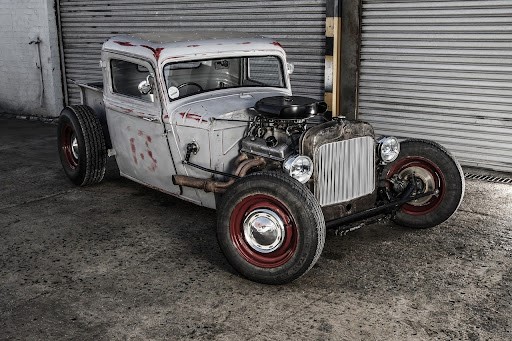 Hot rods are rolling pieces of art and engineering marvels. If the roar of an engine and the sight of a custom-painted body get your heart racing, then building your hot rod might be the perfect project for you.
Hot rods are rolling pieces of art and engineering marvels. If the roar of an engine and the sight of a custom-painted body get your heart racing, then building your hot rod might be the perfect project for you.
This guide will walk you through the basics of starting, from selecting the ideal base car to gathering the necessary tools. Let’s rev up and dive into the exciting world of hot rod building!
Choosing the Right Base Car
Selecting a suitable foundation for your hot rod is crucial. It’s essential to choose a vehicle that not only draws your interest but will also be enjoyable to work on. Here’s how to make a sound choice:
Identify Your Preferences
Reflect on what style resonates with you. Whether it’s a classic like a ’32 Ford or something more distinctive like a ‘50s Chevy, pick a model that excites you and fits your vision of the completed project.
Assessing Your Options
Decide whether to start from scratch with a new build or to take on a part-built project. Part-built cars can offer a head start and might come at a bargain, letting you add your personal touch much sooner.
Title and Legality
Ensure the car has a clear title to avoid registration and legal issues down the line. A seller’s reluctance to show the title should be a deal-breaker.
Inspection Tips
If possible, inspect the car in person. Look for signs of severe rust or damage. If you’re not sure what to watch out for, bring along a knowledgeable friend or hire a professional inspector to avoid future regrets.
Essential Tools and Workspace
To build a hot rod, you’ll need more than just passion – you need the correct set of tools and a proper workspace:
Basic Toolkit
Begin with essential tools, including wrenches, screwdrivers, pliers, and a comprehensive socket set. These will assist you with numerous tasks, such as replacing parts and adjusting.
Advanced Tools
As your project advances, you might require more specialized tools such as a torque wrench, bodywork hammers, and an engine hoist for more intensive tasks.
Workspace Requirements
Secure a safe and dry area such as a garage or a dedicated workshop. Ensure it’s spacious enough for easy movement around the car and tool storage. Proper lighting and ventilation are vital for those extended periods you will spend working on your project.
Budgeting and Financial Considerations
Building a hot rod is a substantial investment, and with thoughtful planning, you can manage your costs effectively without compromising quality:
Understand How Much You’ll Need
Initially, you’ll need to invest in tools and the base car. You also need parts like transmissions, an engine, and interior components.
Costs vary widely based on your project’s scope, ranging from $15,000 for a basic build to over $100,000 for high-end customizations. Start with a clear budget and maintain detailed records to keep spending in check.
Try Non-traditional Funding Options
If funds are tight, exploring non-traditional financing options such as online loans might give you the flexibility you need for your hot rod project. These options can help you purchase essential parts or services without the immediate financial burden. It’s essential to compare interest rates and repayment terms to find a favorable deal.
For builders in Mexico, understanding how buró de Crédito influences loan approvals can be beneficial, especially as some lenders offer loans without requiring a traditional credit check. Knowing this can help you navigate your financing options more effectively, even if your credit history isn’t perfect.
Find Bargains
Look for parts at swap meets, online auctions, and salvage yards to make the most of your budget. These venues often offer valuable deals. Patience and persistence are essential in your search for a good deal, as good deals can disappear quickly.
Building Skills and Knowledge
You need to gain as much skill and knowledge as possible, and this can be done through three easy ways:
Formal Education
If you’re deeply committed to hot rod building, consider enrolling in automotive classes at a vocational school. Vocational schools offer courses in everything from basic auto mechanics to more advanced custom car-building techniques.
Self-Education
Immerse yourself in automotive literature. Read books, subscribe to hot rod magazines, and watch tutorial videos to bolster your understanding and preparedness for upcoming challenges.
Mentorship and Networking
Connect with experienced builders through local car clubs or online forums. Professional builders can offer advice, help you troubleshoot issues, and might even lend you tools or help you source parts. Plus, it’s a great way to make friends who share your passion for cars.
Conclusion
Building your hot rod is exciting beyond turning wrenches and applying paint. It’s about creating something unique that expresses your passion and vision.
This guide has outlined the essentials – from picking your first car to the final checks – ensuring you know what steps to take and what pitfalls to avoid.
Remember, every great builder started as a beginner, just like you. Stay patient, keep learning, and soon, you’ll be behind the wheel of a hot rod that accurately represents your hard work and creativity.










